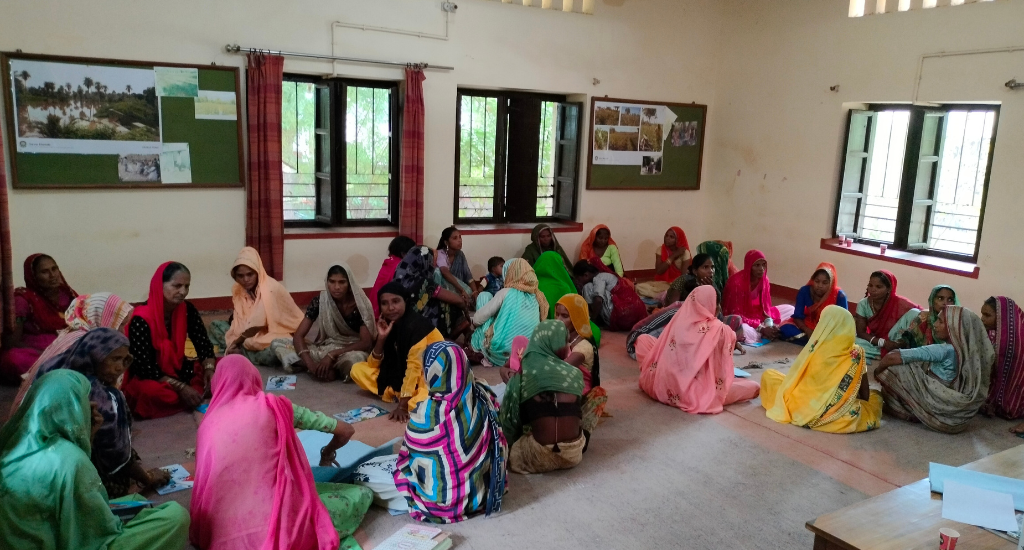
The perils of microfinance in rural Rajasthan
In the heart of rural Rajasthan, microfinance is emerging as a double-edged sword. Used as a tool for economic empowerment, it can also become a debt trap, especially for the tribal communities.

In the heart of rural Rajasthan, microfinance is emerging as a double-edged sword. Used as a tool for economic empowerment, it can also become a debt trap, especially for the tribal communities.
Delving into the on-ground realities of microfinance and assessing its repercussions on the tribal communities in Kotra and Jhadol regions of Rajasthan was a segment of our field placement, which was a part of our curriculum at the Institute of Rural Management Anand (IRMA). This gave us a field placement opportunity and hands-on experience at Seva Mandir in Udaipur.
The Garasia and Gameti tribes constitute 85 percent of the population in the region. They live in scattered huts, engaging in seasonal agriculture and wage labour, besides collecting forest produce. We witnessed a disheartening debt trap scenario, particularly severe in Jhadol, with rampant subsistence poverty and loans piling up in a never-ending debt cycle.

This has led to the rapid expansion of microfinance companies in certain areas, as loan agents exploit the adivasis, misleading them into taking loans with false promises of discounts.
The Garasias, the third largest tribal group in Rajasthan, live in several tehsils, including Abu Road in Sirohi; Kotra, Gogunda and Kherwara in Udaipur; and Bali and Desuri in Pali districts. The name Garasia is believed to have originated from the Sanskrit word gras, meaning substance.
While the main tribal group is Garasia, a small population of the Bhil Gameti community also lives here. These communities face significant socioeconomic challenges, as a result of which the blocks are among the most underdeveloped in Rajasthan.
Also Read: Is rural India on the brink of a renaissance?

The Garasias’ bardic tradition and folk songs connect them with the Rajputs since the medieval times. The tribes are known to have worked in the fields of Rajput landlords when they were unable to repay debts. As evidenced by this, indebtedness has been a recurring aspect of the Garasia community’s history.
During colonial rule, the Bhils, alongside other ethnic groups, actively resisted the British authority. In response to their defiance, they were unjustly labelled as ‘criminal tribes’ under the British Indian Empire’s Criminal Tribes Act of 1871.
The Bhils occupy a liminal space now, caught between the unfulfilled promises of development and the loss of authority over their ancestral resources. They find themselves marginalised, unable to reap the benefits of progress, while their traditional way of life faces increasing threats.
This liminality reflects a paradox of exclusion and dispossession, wherein these indigenous communities remain in a state of transition, struggling to find their place in a rapidly changing world. In their state of limbo, financial inclusion instruments such as microfinance and microcredit seem like mirages in the desert of uncertainty.
Originating from Bangladesh’s Grameen Bank, microfinance – now encompassing loans, savings and insurance – primarily targets women to combat rural poverty. Yet, its effectiveness remains debatable, and there is limited conclusive evidence of its impact.
Also Read: Rural women start bank for economic transformation

While microfinance is not a straightforward path to wealth, responsible usage and diligent repayment are crucial for its success. However, many fall into debt due to the misuse, by taking substantial loans for personal use.
While it’s the government’s role to alleviate poverty, microfinance can be an effective tool for an individual’s financial improvement if used wisely. The challenge is heightened by low financial literacy in India’s rural regions, which hampers financial inclusion. The lack of awareness about microfinance services contributes to financial exclusion.
In Kotra and Jhadol regions, local youth, attuned to the needs of the tribal communities, are often recruited as microfinance agents. The Bhils, who live in the present without concern for the future, are prone to borrow for immediate personal needs like weddings or vehicles that do not bring in revenue.
Such a lifestyle influences their financial decisions, entangling them in a web of socioeconomic vulnerabilities. High interest rates, the practice of loan renewals to mask defaults and severe debt burdens pose serious challenges in these communities.

The microfinance crisis in Andhra Pradesh in 2010, marked by suicides and alleged malpractices by microfinance institutions (MFIs), serves as a stark warning. The Andhra Pradesh government’s intervention, restricting MFI operations, reflected a deeper conflict between microfinance models and political interests.
Also Read: Creative economy is empowering rural India
This scenario mirrors potential risks in rural Rajasthan. The study of Kotra and Jhadol, revealing economic struggles and exploitation among the adivasi communities, indicates that Rajasthan is on a similar trajectory. The misuse of microfinance here, as a profit-driven mechanism rather than a poverty alleviation tool, suggests that Rajasthan is a ticking bomb in its microfinance sector.
The lead image shows group activities carried out to improve financial literacy among women. (Photo by Manika Mahajan)
Srividya Kripakar is pursuing an Executive MBA at Institute of Rural Management, Anand (IRMA).